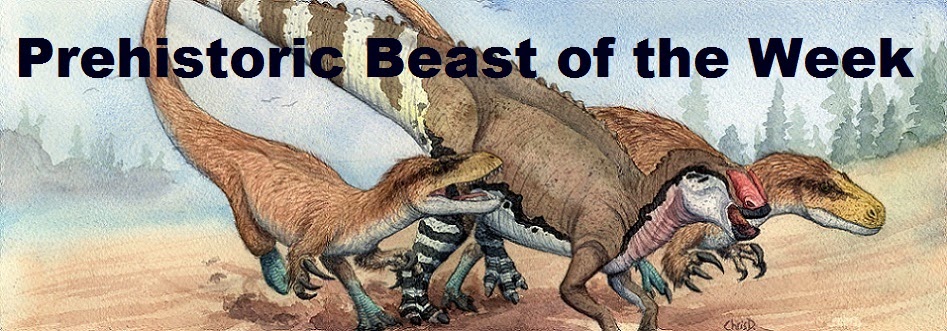This week we will be learning about an amazing armored dinosaur with a delightfully spooky name. Check out Zuul crurivastator!
Zuul was an ankylosaur dinosaur that lived in what is now Montana, USA, during the late Cretaceous period, about 75 million years ago. It measured about 20 feet (6 meters) from beak to tail and would have eaten plants when alive. The genus name is in direct reference to the monster from the 1984 movie, Ghostbusters, which paleontologists think resembled the dinosaur's skull. The genus name translates to "destroyer of shins" because of how this dinosaur may have used its tail weapon defensively on the legs of predatory dinosaurs.
.jpg) |
| Zuul watercolor life reconstruction by Christopher DiPiazza. |
Zuul is especially important to paleontologists because we have an almost complete skeleton from it containing not only most of its bones, but also most of the armor still in the position on the body it would have been when the dinosaur was alive. More commonly when armored dinosaurs are discovered all of those bits are just jumbled nearby (if they are present at all) leaving scientists guessing the best they can how they were arranged in life. Zuul also preserved parts of its body that normally don't fossilize like the keratin that covered its armor and even some of its scaly skin!
 |
| Zuul from Ghostbusters (top) compared to Zuul from the Cretaceous (bottom) |
Zuul's skull is similar to those of most ankylosaurids, possessing a relatively low, wide snout that had a beak growing over it in life. In the back of its jaws it had a series of serrated leaf-shaped teeth which were ideal for processing plants. It had a bony plate-like structure growing from either side of its lower jaws and short horns growing from its cheek bones and the back of its skull. It also had forward-facing nostrils which were lined with bony armor. Because of their wide snouts, ankylosaurids are thought to have been more generalist feeders, essentially hoovering up large volumes of plants low to the ground.
 |
| Photographs of Zuul's tail including its club, osteoderms, and even some skin. Note how the portion of the tail closest to the bony club is stiffened like a rod. (image from Arbour's 2017 paper referenced below) |
Zuul's tail is extremely well preserved, with sharp triangular osteoderms (bony plates that grow from the animal's skin) lining each side. Some of these osteoderms preserve the keratin (material that horns and nails are made of) that would have been growing over them, showcasing their size and shape in life. Like all ankylosaurids, Zuul had a bony club made of a set of fused osteoderms at the tip of its tail. The base of Zuul's tail nearest the hips would have bee relatively flexible and muscular to allow it to swing its club around with great force. The thirteen vertebra closest to the club, however, were rigid, forming a stiff handle allowing for stability when the weapon was swung, preventing injury. (To better understand why this is important, imagine how awful using a hammer would be if the handle was floppy.)
The armor on Zuul's back was preserved in place as well as a lot of its skin, giving us a really accurate idea of what it looked like in life. When observed more closely by paleontologists, they noticed that some of the armor plates on its back appeared to have been broken and healed over repeatedly during the course of the dinosaur's life. These sorts of injuries don't really appear to have been inflicted by a predatory dinosaur, but they DO match up with being inflicted by the tail of another Zuul, which is exactly what experts think they were from. This supports the idea that ankylosaurid tail weapons weren't evolved primarily for defense against predators, but also for combat within the species, possibly for dominance, territory, or access to mates.
That is all for this week. As always feel free to leave a comment below!
References
Arbour, Victoria M.; Evans, David C. (2017). "A new ankylosaurine dinosaur from the Judith River Formation of Montana, USA, based on an exceptional skeleton with soft tissue preservation". Royal Society Open Science. 4 (5) 161086.
Arbour, Victoria M. Lindsay Z., Evans, Daid C. (2022)."Palaeopathological evidence for intraspecific combat in ankylosaurid dinosaurs" . Royal Society Open Science. 18: 20220404


No comments:
Post a Comment